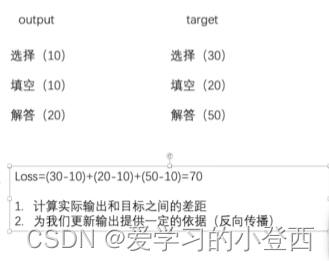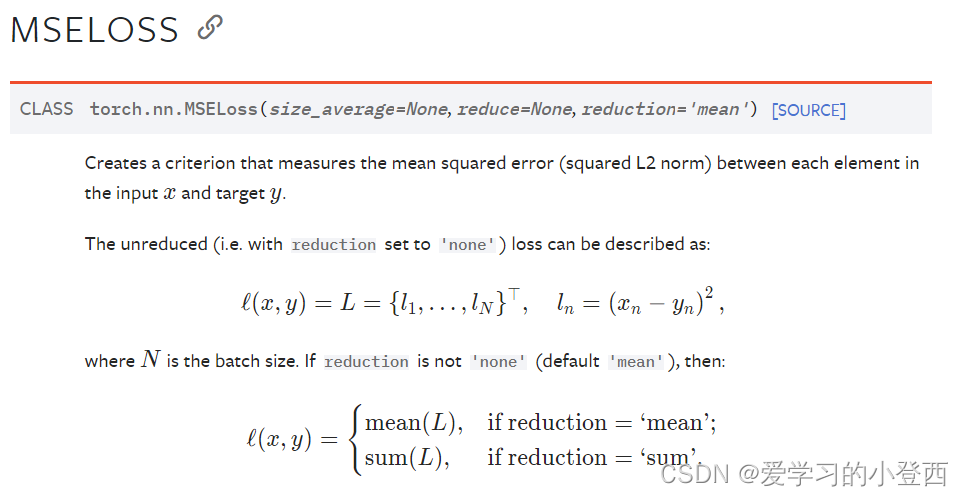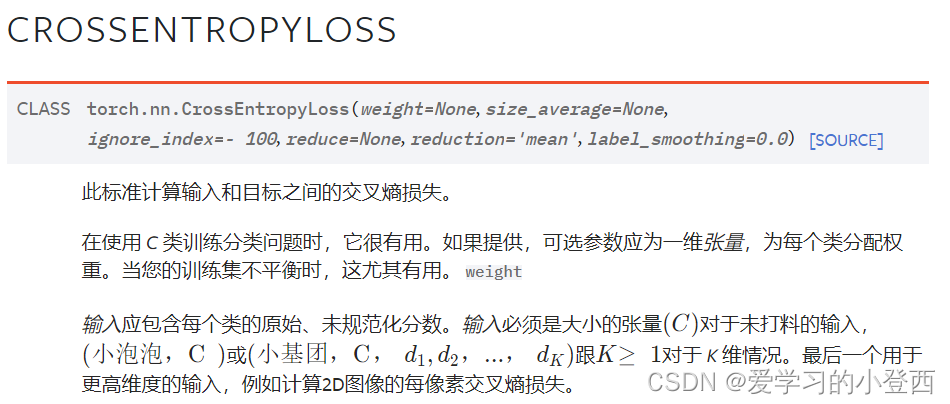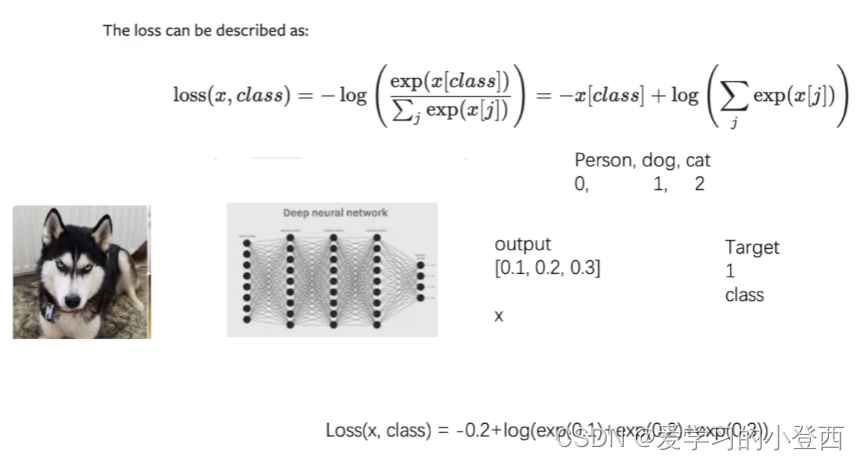损失函数和反向传播
损失函数Loss
1.概念理解

2.官方文档
使用不难,要明白loss是如何计算的需要一定数学功底

(1)L1loss

X:1,2,3
Y:1,2,5
L1loss = (0+0+2) / 3 = 0.6
MSE = (0+0+2^2) / 3 = 1.333
import torchfrom torch.nn import L1Lossinputs = torch.tensor([1, 2, 3], dtype=torch.float32)targets = torch.tensor([1, 2, 5], dtype=torch.float32)print(inputs.shape)inputs = torch.reshape(inputs, (1, 1, 1, 3))targets = torch.reshape(targets, (1, 1, 1, 3))print(inputs.shape)loss = L1Loss(reduction='mean')result = loss(inputs, targets)print(result)结果:
(2)MSELOSS

loss_mse = nn.MSELoss()result2 = loss_mse(inputs,targets)print(result2)结果:
(3)CROSSENTROPYLOSS


x = torch.tensor([0.1, 0.2, 0.3])y = torch.tensor([1])x = torch.reshape(x, (1, 3))loss_cross = nn.CrossEntropyLoss()result3 = loss_cross(x,y)print(result3)结果:
与卷积网络结合
import torchvisionfrom torch import nnfrom torch.nn import Sequential, Conv2d, MaxPool2d, Flatten, Linearfrom torch.utils.data import DataLoaderdataset = torchvision.datasets.CIFAR10("data", train=False, download=True, transform=torchvision.transforms.ToTensor())dataloader = DataLoader(dataset, batch_size=1)class Peipei(nn.Module): def __init__(self) -> None: super(Peipei, self).__init__() self.model1 = Sequential( Conv2d(3, 32, 5, padding=2, stride=1), MaxPool2d(2), Conv2d(32, 32, 5, padding=2), MaxPool2d(2), Conv2d(32, 64, 5, padding=2), MaxPool2d(2), Flatten(), Linear(1024, 64), Linear(64, 10) ) def forward(self, x): x = self.model1(x) return xpeipei = Peipei()loss = nn.CrossEntropyLoss()for data in dataloader: imgs, targets = data outputs = peipei(imgs) result_loss = loss(outputs,targets) print(result_loss) # 反向传播,计算每个节点的梯度/参数,以便于后续选择合适的优化器 result_loss.backward()结果:


